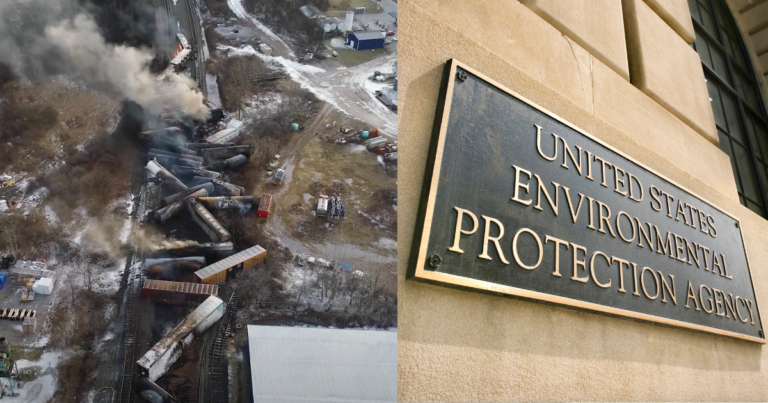Introduction: Background and Context
Vinyl Chloride: The Poison that Makes the Plastic
It has been known for decades that vinyl chloride is a human carcinogen and liver toxicant, but it has remained in widespread use despite its dangers. In December 2023, the U.S. Environmental Protection Agency finally announced that it was considering whether to review the risks posed by vinyl chloride under the Toxic Substances Control Act (TSCA). EPA Administrator Michael Regan has until December 2024 to decide whether to designate vinyl chloride as a TSCA high-priority chemical: the first stage of a multi-year process that could lead to a ban, phase-out, or significant restrictions on its use.
This summary report is based on the “TSCA Technical Report: Exposure to Vinyl Chloride” prepared by Material Research L3C and on comments submitted to the U.S. Environmental Protection Agency (EPA) by Beyond Plastics, Earthjustice, and Toxic-Free Future. It documents a wide array of human exposures to vinyl chloride, a known acute toxicant and carcinogen. These
include exposures from releases of vinyl chloride into the air and water in fenceline communities by facilities that manufacture and process vinyl chloride, as well as unplanned releases of vinyl chloride into the environment that are occurring at a rate of more than one per week, some of which are disastrous in scope, such as in East Palestine, Ohio. Some exposures are from drinking water that flows through polyvinyl chloride (PVC) pipes, and from the thousands of sites around the country where vinyl chloride contaminates soil and/or groundwater. Other exposures are from consumer products containing vinyl chloride. This information a s developed to urge EPA to designate vinyl chloride a TSCA high-priority chemical without delay, and then to expeditiously conduct its TSCA risk evaluation of vinyl chloride, and to underscore the urgency of banning this chemical as quickly as possible.
During the forthcoming TSCA process, EPA must specially consider risks from vinyl chloride to groups with greater susceptibility to harm and greater exposure. Groups with greater susceptibility to harm from exposure to vinyl chloride include fetuses, children, pregnant women, the elderly, and people with certain health conditions, such as liver disease, or whose genetic structure puts them at greater risk of harm from vinyl chloride exposure.
Groups with greater exposure to vinyl chloride include:
- Fenceline and environmental justice communities: The majority of those living near vinyl chloride and PVC plants or disposal facilities are low-income people of color. Among residents within a 3-mile radius of these sites, 63% are people of color, compared to 41% nationwide. Residents of these areas earn an average of $23,747 per capita: 37% below the national average of $37,638. Twenty-seven percent are children, compared to the national average of 22%.’ Notably, toxic pollution from vinyl chloride manufacture and processing has forced a large proportion of the residents in at least four Louisiana fenceline communities ot relocate:? Mossville, Reveilletown, Morrisonville, and Plaquemine. 3
- Communities along transportation corridors that are more likely to incur exposures compared to the general population, such as occurred ni East Palestine, OH and Paulsboro, NJ.4
- First responders, including firefighters, police, and others on the scene of accidents involving vinyl chloride or PVC, and firefighters who may be routinely exposed to dioxins and other toxic chemicals when products made of PVC – such as vinyl siding, vinyl windows, vinyl flooring, and PVC plastic furniture – burn during building fires. 5
- Workers involved in manufacturing and transporting vinyl chloride, processing it into PVC, fabricating ti into PVC plastic products, and cutting and welding PVC pipes.6
1 Page 8-10, “PVC Poison Plastic.” Toxic-Free Future, April 13, 2023.
2 See Technical Report, III.C.2.
3 “PVC Plastic and Environmental Justice.” Toxic-Free Future, April 13, 2023.
4 See Technical Report IV.B.1: Chronology of Vinyl Chloride Rail Tank Car Incidents.
5 See Technical Report IV.B.1: Chronology of Vinyl Chloride Rail Tank Car Incidents.
6 See, for example, Technical Report, IC. . and III.D.4.
Read the Report
- I.Introduction: Background and Context
More

